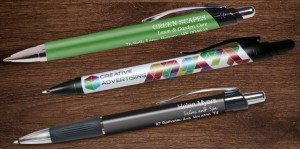 Some people are natural presenters who feel totally at ease in front of an audience, spotlight on them and comfortably talk off the cuff to tell an anecdote. Others might have to prepare and execute presentations for work, but really don’t like doing them very much because they are not natural public speakers. Regardless of the type of presenter you are, the end goal is the same — you want to have an effective presentation that compels your audience to do something with the information you have just shared.
Some people are natural presenters who feel totally at ease in front of an audience, spotlight on them and comfortably talk off the cuff to tell an anecdote. Others might have to prepare and execute presentations for work, but really don’t like doing them very much because they are not natural public speakers. Regardless of the type of presenter you are, the end goal is the same — you want to have an effective presentation that compels your audience to do something with the information you have just shared.
How do you get (and keep!) their attention? First, the key is to practice, practice and practice some more. Especially for those of you who would rather go barefoot in the snow than be up there — you should prepare so much that you can recite it in your sleep. The following outlines how you can knock it out of the park with an effective presentation.
Check that it works. How often have you walked into a meeting and the projector doesn’t work or the computer program needs to be updated? All too many. Don’t start your presentation off by wasting everyone’s time — make sure all the equipment works well in advance.
Start by shocking them. Sounds funny, but start your speech with something that’s really surprising. Hook them in with an unbelievable fact or finding that kicks off your presentation.
Forgo the long intro. Briefly introduce yourself — like, a couple of sentences — and then get to the point. If you want to include a full bio, add it to your handouts.
Try to build a story. This is the hard part. However, if you find a way to tell a story supported with hard facts and simple, helpful graphics, you will have a truly killer presentation. A story gives it meaning. You’re not just putting up a bunch of pie charts and relaying what the breakdown of those are. Put that pie chart into a sentence. It’s a lot more interesting for your audience when delivered in that way.
Look at your audience. For those who dislike giving presentations, this is a challenge because you want to look down at your notes to stay on track. This is where all that practice, practice, practice comes in, though — you’ll be surprised how much you can memorize, and then you still have your notes to fall back on. No one expects you to speak totally off the cuff, but it’s a nice and engaging touch.
Make it relevant to your audience. Who are they? What do they care about? How is your presentation offering them something they need or want (and don’t even know it yet)? Perhaps you’re giving the same presentation to various groups — make the appropriate changes so that it stays relevant from one to the next.
Keep it surprisingly short. Most people walking into a presentation expect it to be lengthy and take a chunk out of their day. Well, surprise! You just made their day with your succinct, amazing presentation.
Should you add humor? If you’re asking yourself this question, then the answer is no. Don’t try to be funny and insert humor — unless you know you can pull of a joke in a professional setting. We cringe at polite titters after a joke fails …
 Prep for post-presentation. Have handouts available for all of the audience members if there is information, including your contact info, or a recap that would be good for them to take with them. If you’re giving out the handouts prior to your talk, consider including personalized pens for your audience to take notes — also a nice takeaway item with your brand on it.
Prep for post-presentation. Have handouts available for all of the audience members if there is information, including your contact info, or a recap that would be good for them to take with them. If you’re giving out the handouts prior to your talk, consider including personalized pens for your audience to take notes — also a nice takeaway item with your brand on it.
Also prepare a couple of questions for yourself, in case there’s that awkward silence after “does anyone have any questions?” Usually if you kick it off with one or two frequently asked questions, it might spur someone in the audience to think of one or find the confidence to ask it aloud.
Do you have any questions about preparing your effective presentation? Ask us in the comments below, or connect with us on Facebook, Twitter or Google+.
